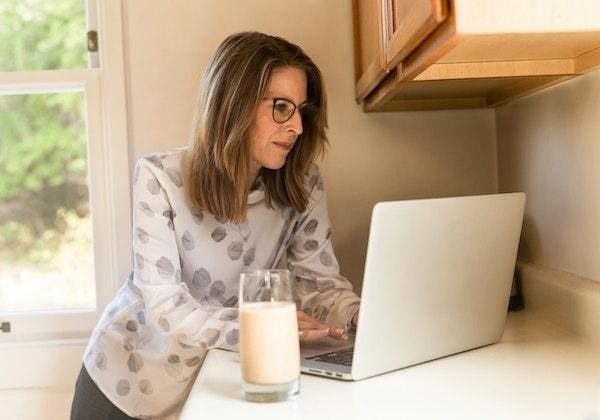In the grand theater of business, a new act is taking center stage – the emergence of hybrid work. Let’s begin by acknowledging a simple fact – the genie of hybrid work has left the bottle, and there’s no coaxing it back in. As Mark Ralls, CEO of ActivTrak, a leading workforce analytics company, told me in our interview, “Hybrid work is here to stay for the long term.” The show must go on, and indeed, it is continuing with vigor. We have collectively been pushed to embrace the merits of this work style during the pandemic – reduced commute times, increased job satisfaction, and the flexibility it offers are just the tip of the iceberg. It’s akin to finding an unexplored shortcut to your favorite ice cream shop: once discovered, there’s no reverting to the long, tiring route.
Hybrid Teams: The Delicate Balance Between Productivity and Bias
However, navigating the hybrid work landscape isn’t all sunshine and rainbows. Just like our newfound path to the ice cream shop might have some bumps and turns, there are steep slopes of challenges to conquer when managing hybrid teams, namely maintaining productivity and diminishing biases.
Here, Ralls offers an eye-opening perspective: an office isn’t a scale for measuring commitment; presence within its confines doesn’t directly translate to dedication. This is akin to a chameleon blending into the environment; just because you see it in a tree doesn’t mean it’s dedicated to arboreal life. Here, data and analytics become the ‘herpetologist’ we need, offering objective insights into employee productivity and engagement. By analyzing these critical metrics, we can dismantle the old biases and bridge the gap between remote and in-office employees, ultimately building a more cohesive and harmonious workforce.
Collaboration in Workforce Analytics: The Secret Sauce for Success
Emerging victorious from the labyrinth of hybrid work challenges necessitates strategic moves. One such move, as Ralls recommends, is adopting a collaborative approach to workforce analytics. It’s like the chef and sous-chef working together to whip up a Michelin-star dish. The chef, akin to the employer, provides the ingredients – data on work processes, productivity tools, and possible distractions. The sous-chef or the employee brings their unique style and skills to use these ingredients to their best potential. This collaborative endeavor drives up productivity, and more importantly, it enhances employee engagement and satisfaction.
But let’s be clear, this process of collaboration is a delicate art; it’s a collaborative cooking process, not a reality TV show. Surveillance tactics such as monitoring idle time or webcam usage are as destructive to productivity as a chef inspecting every sprinkle of salt the sous-chef adds. It’s a recipe for disaster, impairing trust and motivation. In contrast, a harmonious employer-employee collaboration cooks up a positive, engaging, and high-performance work environment. That’s what I always tell my clients who I help figure out a flexible hybrid work model: trust your employees, and they will be trustworthy.
Future Trends: Virtual Collaboration, Office Design, and AI
As we march forward into the territory of remote work, Ralls’ crystal ball shows three vital aspects of future workplaces: virtual collaboration technology, innovative office design, and the role of generative AI. Today’s virtual brainstorming sessions, he admits, are much like non-alcoholic beer – they imitate the real experience, but something vital is missing. However, technological evolution is inevitable, and soon we might all be savoring the rich, full-bodied taste of effective virtual collaborations.
Speaking of office design, Ralls introduces an exciting concept that could revolutionize the traditional workspace. Imagine an office space shared among companies, reminiscent of college roommates dividing fridge shelves. This unique arrangement could maximize space usage and spark cross-pollination of ideas. Such out-of-the-box thinking, when combined with advancements in technology, can lead to a renaissance in the world of work.
Finally, AI enters the chat, not as the job-snatching monster under the bed but more of a diligent house-elf from the Harry Potter series, quietly taking over mundane tasks. The AI-driven transformation will free up human minds for creative and productive ventures, thus unleashing untapped potential in the workforce.
The Optimized Future: Flexibility, AI, and Well-being
In a nutshell, the future of work is a high-tech dance, flexible yet robust, enabled by AI. With the right choreography and dancers who can move to the rhythm of data and analytics, the dance floor – your company – will be lit. Just ensure to employ data ethically and encourage every dancer’s participation to maintain a harmonious sway.
As we draw the curtains on our insights from the conversation with Mark Ralls, remember: hybrid work, like any other system, requires adept handling. But once you master the strings, the performance on stage is nothing short of a standing ovation.
The dance of hybrid work is undoubtedly complex. It has its twists and turns, leaps and bounds. However, with data as our guiding star, a collaborative approach as our compass, and the drive to adapt and innovate, we can conquer the hybrid work dance floor. It’s not a dance of solo performances; it’s a dance of unity, collaboration, and collective success. So, let’s tune the instruments, perfect the symphony, and orchestrate the future of work, one note at a time. The grand act of hybrid work continues on the world stage, and it’s our role to deliver an encore-worthy performance.
Read the full article here










